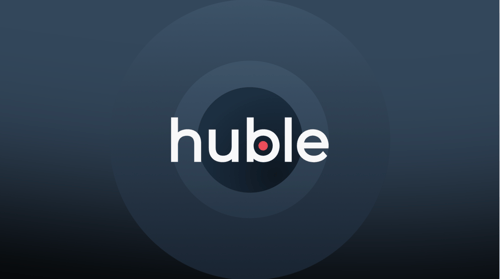When it comes to using social media channels for your B2B marketing, the most popular platforms by far over the last five years have been LinkedIn and Twitter.
LinkedIn provides businesses with a ‘direct line’, as it were, to people who operate within their industry, using its algorithms to serve up targeted content to people they know will be interested in the services and products you provide.
Twitter, on the other hand, is an excellent platform for widespread content distribution and for the amplification of your business’ messages to a wider audience. It enables businesses to easily engage with audiences on the latest developments, trends and topics in the industry.
But what about Facebook?
In the past, you might not have considered Facebook for B2B marketing, as since its inception, it has been used predominantly by teenage college kids and has grown a following amongst B2C consumer brands. If you watched 'The Social Network', you will have seen it was initially created to be used just within Universities!
However, over 13 years of operation, it has ‘grown up’ and now offers businesses a way to promote and advertise their products and services directly to their audience. Especially now that it includes paid ad placements.
Facebook was originally a platform that enabled nothing more than personal updates and conversations with friends and family, but over time it has grown up to become a mega marketplace for retail brands and consumer interests. Indeed, it has matured to the point where it has recently become a significant platform for the political parties as they battled for the hearts and minds of Brexit lovers and Remain protesters.
But while all this was going on – and Facebook was maturing – guess what happened?
We all got older.
The next generation decided that other platforms were much cooler than Facebook. Snapchat, Instagram (owned by Facebook, by the way) and Pinterest quickly developed large followings – and have become places where people share more ‘personal content’ – while Facebook has moved on and matured.
The Facebook user demographic and mission objective has changed – diversified, in fact.
It has not only grown older but also more encompassing. Mums and Dads (and Grandparents) have embraced it – using it as a means to stay in touch with the kids (and the grandkids). And as they came in, the youth left by the other door; too cool to be seen using the platform at the same time. But the youth didn’t resign, they just left everything as it was. So the volume of accounts on Facebook hasn’t really subsided – it is just the ‘active user’ demographics that have changed. And try and get those stats out of Facebook! Oh no, that’s bad for business!
As it stands, in the US, the largest demographic on Facebook is those aged 25-34 – according to Statista’s demographic report – closely followed by those aged 35-44. In the UK, these statistics are incredibly similar, with 25-34 year olds being the largest demographic, followed by 35-44 year olds.
Today, Facebook is more of a social media monster than it is a social networking site. A quick scroll through any Facebook user’s newsfeed will reveal a plethora of ads, branded content and other marketing collateral. Indeed, Facebook has changed considerably, going from a social networking site, to a fully-fledged media company.
In many respects, this is what the natural progression of huge networking sites looks like. As time passes, it is essential to ‘evolve’ and meet new market demands and customer expectations.
However, despite these changes, I’m here to tell you that every social media channel (including Facebook!) can be leveraged and utilised by your business. Each channel is unique in its demographic, messaging, tone and application, but knowing this background will enable you to create marketing campaigns that truly reach the right audiences.
A 2017 quote from Brian Halligan, CEO of marketing automation software super-platform, HubSpot: “Try your B2B advertising on Facebook while it’s still cheap. This time next year it will cost you twice as much!”
Using Facebook for B2B marketing
Facebook, having grown into a media behemoth, has become an excellent platform for B2B businesses to distribute content, showcase their expertise, and promote business and industry specific news.
As I mentioned previously, the demographic of Facebook has changed; its users have gotten older – and the youth have dashed for the nearest exit! Those ‘kids’ who were using the platform to socialise are now on Instagram, Snapchat and Pinterest. But you can’t dismiss Facebook for B2B marketing activity, as your ideal target demographic is right there, right now! In addition, with Facebook having such high active user levels, levels which continue to grow month-on-month, there’s nothing to be lost by engaging on the platform.
As Facebook has evolved, it’s come to include more sophisticated options for marketers to utilise, tools such as advanced targeting enable marketers to pinpoint audiences based on: levels of education, job title, work place, age, gender and location. Also, marketers can leverage Facebook’s ‘Custom Audiences’ feature to target existing client bases and nurture leads, as well as use the ‘Lookalike Audiences’ feature to find more similar audiences and find more prospects.
What about using Twitter, Snapchat and Instagram for B2B?
Twitter however, continues to be a mouthpiece and platform for businesses looking to amplify their messaging and content, as well as engage with the thought-provoking trends and topics of the day.
Snapchat and Instagram on the other hand, have effectively replaced Facebook as the ‘hip’ platforms – and B2C businesses have moved over to them due to their ability to sell directly to their target audiences. The great thing about Snapchat and Instagram is that the ‘follow’ function by nature is indicative of a user’s interest in what that brand or business sells. It provides B2C companies with the perfect opportunity to showcase their products to their audience and capture their interest.
Furthermore, Snapchat and Instagram enable B2C businesses to include links directly in their picture/video content, which followers can then click on - these links could be anything from promotional codes on cross-sell products or discounts on existing products.
Lastly, both Snapchat and Instagram are exceptional for developing brand awareness. The ‘Stories’ feature present on both (first pioneered by Snapchat and later adopted by Instagram and Facebook) enable businesses to upload videos of their own which are visible for 24 hours. These stories give users a visual narrative, offering a brief look into what a business and brand does on a day-to-day basis, giving them a more ‘human’ element.
As you can see, there is tremendous opportunity for any business to utilise these social media platforms – be they B2C or B2B. Depending on your business’ objective, be it brand awareness or lead generation, how you engage with audiences on these platforms will determine just how successful you are. Hopefully, armed with this knowledge, you can begin to make the strategic marketing decisions that enable you to make these platforms work for your business. Don’t be afraid to give them a try – a small budget and some careful targeting can yield some useful new leads!










-3.png?width=500&height=320&name=Matt%20-%20imagery%20bank%20(8)-3.png)

